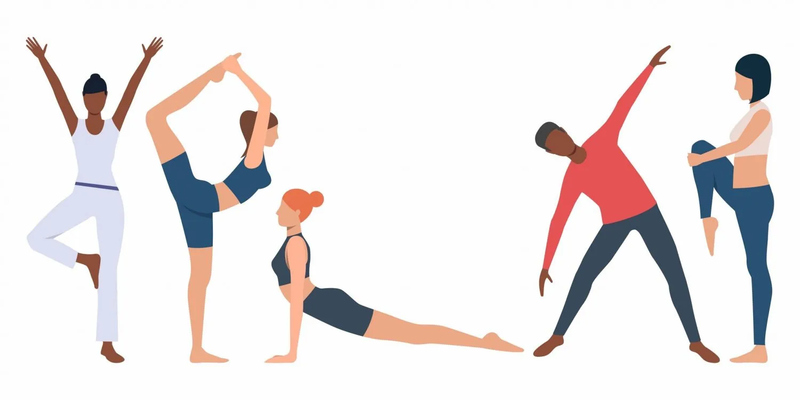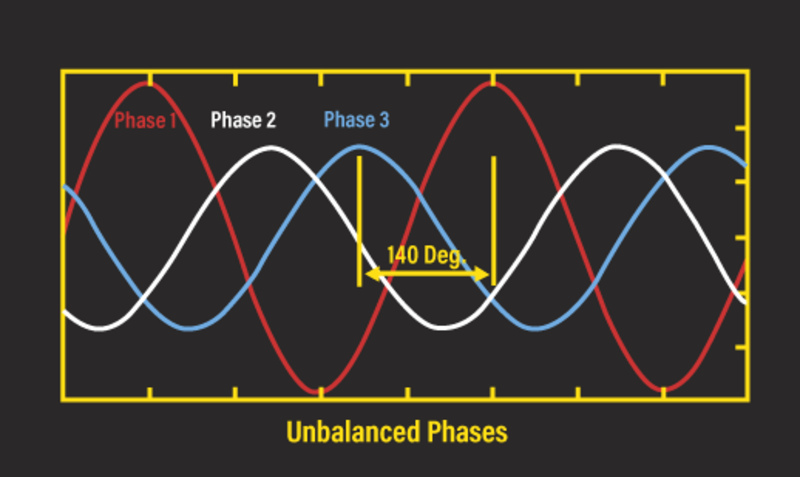In any fitness routine, stretching serves as a fundamental component. It offers an array of benefits that transcend mere flexibility. This guide delves into advanced stretching techniques and strategies for enhancing flexibility. We aim to assist you in fully capitalizing on the advantages inherent within this frequently disregarded facet of overall health and fitness.
The Foundation of Stretching Techniques
Let us first grasp the fundamental stretching techniques before delving into the nuances of optimizing stretching benefits.
Static Stretching: Enhancing Flexibility
In the realm of flexibility training, static stretching serves as a foundational technique. It requires one to hold a position and gradually elongate muscles. Unlike dynamic stretching, where movements are involved, static stretches. On the other hand, these are performed without any motion, thus enabling muscle lengthening under tension.
Perfect for systematically targeting specific muscle groups, this classic method enhances overall flexibility. Your routine's integration of static stretching bolsters range-of-motion capabilities diminishes muscle stiffness, and amplifies joint flexibility. A cornerstone in any comprehensive flexibility training program. It establishes a robust foundation for optimal results.
Dynamic Stretching: Warming Up Effectively
In stark contrast to static stretching, dynamic stretching incorporates movement into the routine. As a strategy for effective warm-up, it increases blood flow, warms muscles, and augments overall range of motion. Controlled and deliberate movements form the basis of dynamic stretches that mimic your workout actions.
Engaging in dynamic stretching before delving into more intense physical activity not only primes your body for imminent challenges but also diminishes injury risk. Athletes and individuals participating in agility, and coordination-demanding activities particularly benefit from this type of stretching.
PNF Stretching: The Power of Contractions
By combining static and isometric muscle contractions, Proprioceptive Neuromuscular Facilitation (PNF) stretching elevates flexibility training to an advanced level. This technique promotes unique flexibility through a strategy that alternates periods of muscle contraction with relaxation.
Leveraging the body's natural reflexes makes PNF stretching particularly effective in targeting specific muscle groups. Before the subsequent stretch, isometric contractions actively engage the muscles and promote a deeper relaxation. Known for yielding substantial gains in range of motion, this advanced stretching technique proves invaluable to individuals aiming to test their flexibility limits.
Going Beyond the Basics of Flexibility Training
Having familiarized yourself with diverse stretching techniques, we can now embark on an in-depth exploration of flexibility training.
Balancing Strength and Flexibility
Beyond the mere pushing of muscles to their limits, effective flexibility training navigates a delicate balance between strength and flexibility. To guarantee that your muscles embody both robustness and adaptability, you must integrate resistance training into your routine.

By promoting balance and stability, not only does resistance training enhance muscle strength but it also complements flexibility. Maintaining this equilibrium not only mitigates the risk of injuries but also establishes a sustainable foundation for progress in terms of both strength and flexibility.
Progressive Overload for Flexibility
Like the development of muscular strength, attaining flexibility necessitates a methodical strategy. Often linked with strength training, this principle is just as relevant in fostering suppleness.
Therefore, you must incrementally escalate both the intensity and duration of stretches to provoke musculoskeletal challenges that fuel ongoing enhancements in flexibility.
Ensure your muscles adapt gradually, reducing injury risks and promoting consistent progress through this approach. Pushing boundaries incrementally is key to fostering adaptation and increased flexibility in your body over time.
Incorporating Yoga for Holistic Flexibility
With its ancient roots and holistic approach to well-being, yoga offers an exceptional avenue for augmenting overall flexibility. It goes beyond the mere physical postures or asanas. Emphasizing controlled movements, mindful breathing, and a harmony between mind and body is advocated by yoga.
By incorporating weekly yoga sessions into your routine, you actively contribute not only towards enhancing physical flexibility but also fostering mental wellness, a truly comprehensive impact. Yoga's amalgamation of stretching, strength-building, and mindfulness renders it a potent tool for individuals pursuing an all-encompassing and holistic flexibility training approach.
Optimizing Stretching Benefits - Science and Strategy
Let us venture past the fundamentals and delve into optimizing stretching benefits from a scientific and strategic perspective.
Understanding the Stretch Reflex
Muscles naturally respond to resist sudden overextension through the stretch reflex. This protective mechanism, at times, impedes gains in flexibility. Nonetheless, if you gradually and consistently push their flexibility boundaries. They can mitigate these effects of the stretch reflex.
The approach stretches with patience and mindfulness. This approach allows your muscles to adapt over time. As you persist in working towards increased flexibility, the stretch reflex diminishes, resulting in more extensive, controlled movements without triggering the body's protective response.
Timing and Frequency Matter
Successful flexibility training hinges on consistency. To achieve optimal results, you must establish a regular stretching routine. Moreover, paying meticulous attention to the timing of your stretches, and maximizing their effectiveness is crucial.
Before workouts, engage in dynamic stretching. This primes your muscles for activity by boosting blood flow and enhancing flexibility. Conversely, incorporate static stretches post-exercise. They facilitate a cool-down phase and enhance overall flexibility. The frequency of these sessions is crucial, a regular commitment to dedicated efforts outperforms sporadic, intense intervals significantly.
Listen to Your Body and Avoid Overstretching
Pushing your limits proves essential for progress. However, equally crucial is heeding your body's signals. Pushing beyond current capabilities, a practice commonly known as overstretching can result in setbacks and injuries.
Therefore, adopting an approach marked by gradual progression while respecting these physiological cues becomes paramount to success. If you experience pain, rather than a gentle pull, during your stretch, this is an indication to ease off. It’s a preventative measure against potential harm. Respect and understand the signals of your body. By doing so, you ensure that the journey towards flexibility remains safe and sustainable.
Learn and Avoid These Common Mistakes in Flexibility Training
Recognizing and rectifying common mistakes in flexibility training, even the most dedicated fitness enthusiasts can consistently progress; indeed, they may fall prey to these errors.
Rushing Through Stretches
Rushing through stretches stands as a prevalent mistake. It limits the effectiveness of each stretch--an issue arising from failing to allocate them their due time. To address this, you must make certain that every stretch receives its deserving period. In doing so, your muscles will be able to adapt and elongate gradually.
In flexibility training, patience proves virtuous, and dedicating sufficient time to each stretch stands as a crucial element for optimal results. Rushing through these stretches diminishes their efficacy. Moreover, it increases the risk of injury, unduly stressing your muscles and joints.
Neglecting Warm-Up Exercises
Warm-up exercises are a non-negotiable component of flexibility training and deter injuries by preventing the increased proneness of cold muscles from harm. If one neglects adequate warm-up before engaging in intense stretching routines, muscle strain, and other injuries may ensue.
Dynamic stretches or light aerobic exercises serve as preparatory measures. They elevate your heart rate, increase blood flow to the muscles, and prepare your body for the demands inherent in flexibility training. A well-rounded warm-up routine, when incorporated, enhances flexibility and also guards against potential injuries.
Ignoring Imbalances
Addressing muscle imbalances constitutes a critical element of comprehensive flexibility training, neglecting this identification and rectification can impede your progress. It may result in uneven flexibility.
Therefore, focus on areas  exhibiting tightness. Employ targeted stretches to restore balance to your general flexibility. Addressing imbalances creates a body that is more harmonious and functional. It moves with superior ease and efficiency.
exhibiting tightness. Employ targeted stretches to restore balance to your general flexibility. Addressing imbalances creates a body that is more harmonious and functional. It moves with superior ease and efficiency.
Mastering Flexibility for Total Fitness
This comprehensive guide navigates the intricate world of stretching, understanding basic techniques, optimizing benefits with advanced strategies, and more. Incorporate these insights into your fitness routine to unlock flexibility training's full potential.
It promotes overall health, prevents injuries, and helps you achieve your fitness goals. Keep in mind, that consistency is key as well as mindful practice and a holistic approach to fitness. Stretch on, and reap the rewards of a more flexible and resilient body.




